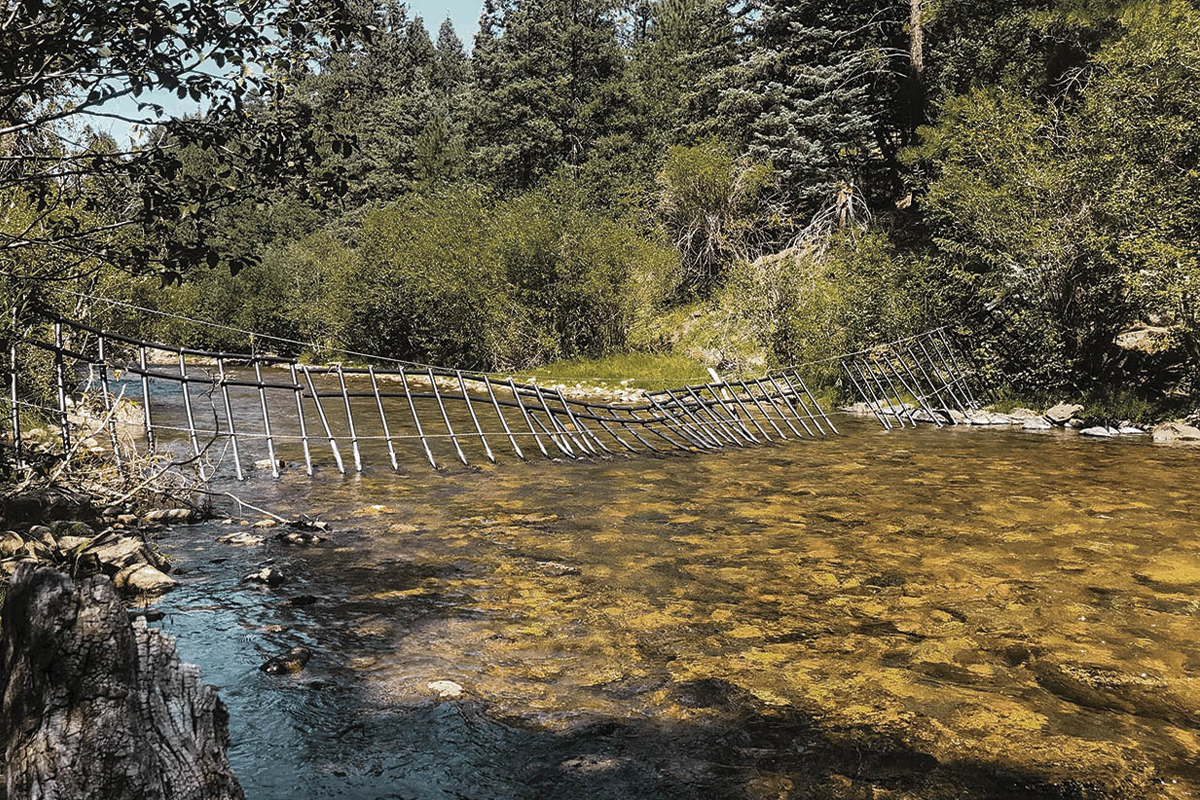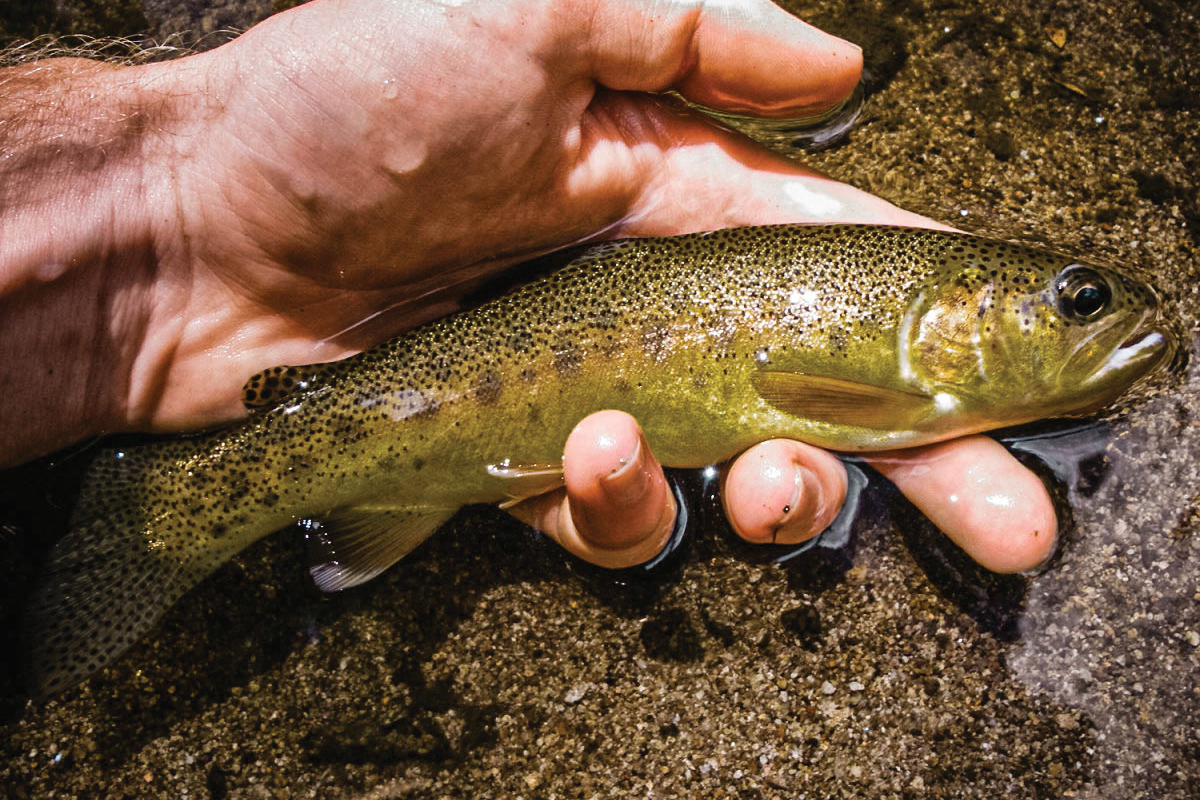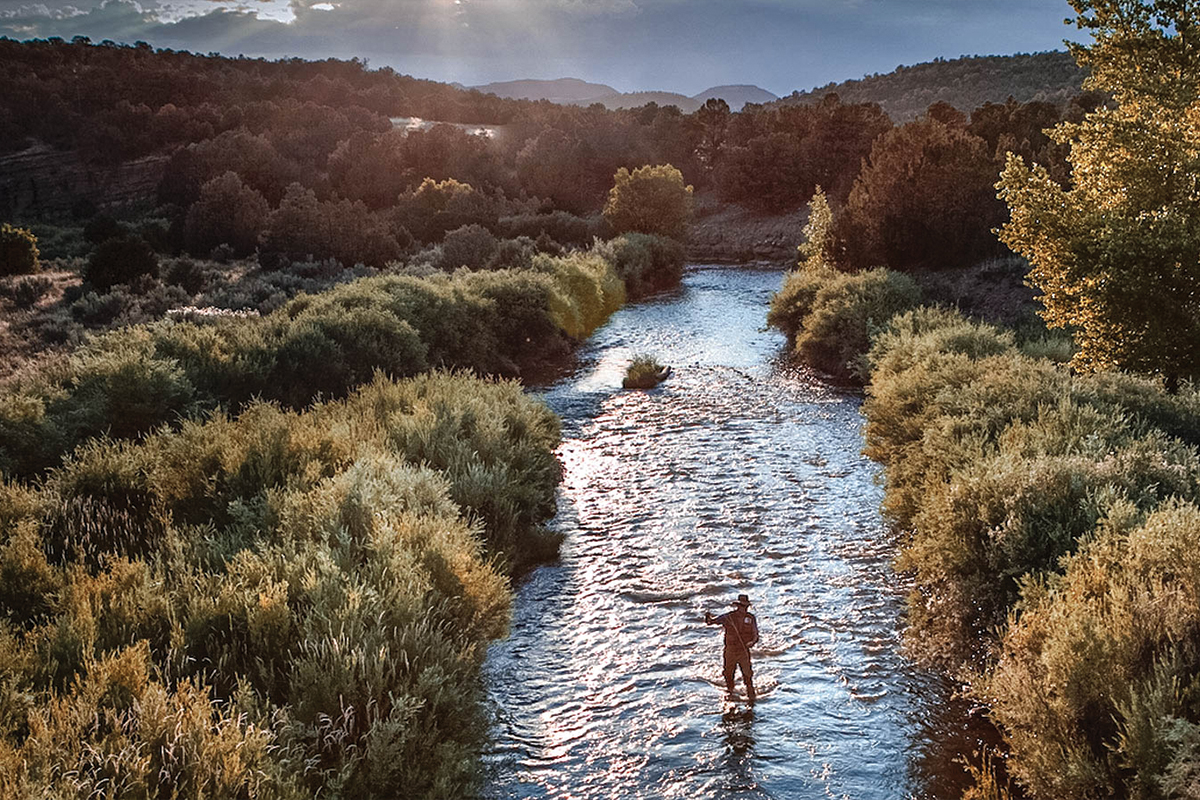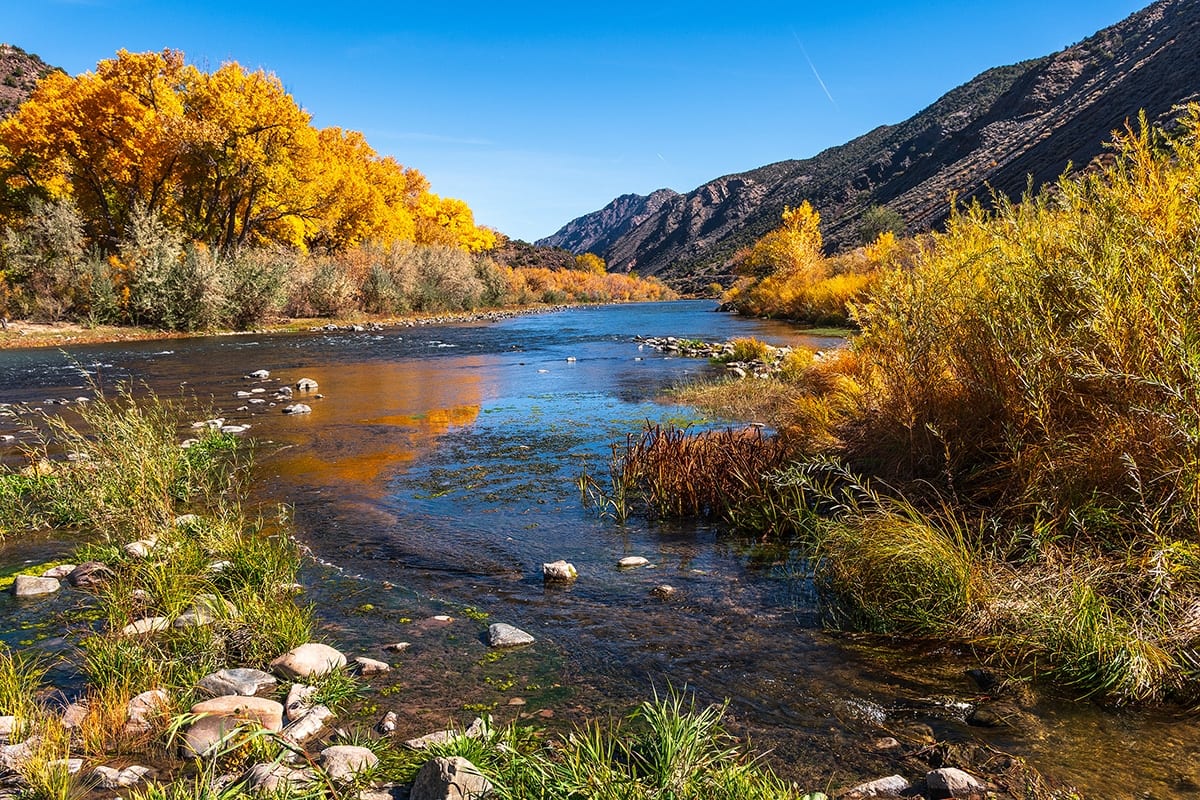Anglers in the Land of Enchantment notched a big win in a stream access fight that saw private landowners attempt to bar the public from using waters that flow through their property. In a ruling on March 1, the state Supreme Court unanimously reaffirmed that access to New Mexico’s rivers is the public’s constitutional right.
The decision reversed a reversal of the state’s original intent for stream access.
In 1907 the Territorial Legislature of New Mexico declared that all waters “belong to the public and are subject to appropriation for beneficial use” — language that was adopted in the state’s constitution when New Mexico actually became a state in 1912.
But “appropriation” and “beneficial use” are murky terms, at best, to rely on when determining who actually gets water rights.

In short, the public is welcome, but they fall into a spot in the hierarchy below those who have appropriated the first rights to the water for beneficial use.
The earliest examples of beneficial use include irrigation, domestic, commercial, and industrial, game and fish, and endangered species uses.
Property ownership comes into play as well. According to the New Mexico Energy, Minerals, and Natural Resources Department site, the earlier Spanish laws that the New Mexican constitution was based on stated the public has the right to use the banks of all rivers, as long as they aren’t trespassing.
It wasn’t until 2015 that the New Mexico legislature determined that there needed to be some sort of definitive framework with regard to public access to water flowing through private land.
The state legislature approved a bill in 2015 that gave the State Game Commission authority to declare waters in the state as “navigable” or “non-navigable.” A distinction that was never considered in the state’s water doctrine.

As a result of that law, the state game commission issued certificates in 2017 to five landowners that prohibited public access to certain stretches of the Pecos, Chama, Penasco, Mimbres, and Alamosa rivers according to the “non-navigable” distinction.
The recent state Supreme Court ruling removes the navigability law in its entirety and also reverses the closures on the five New Mexico streams.
It only took the court 15 minutes to reach its decision after an hour of testimony. According to a news report, Chief Justice Michael Vigil said the court unanimously agreed that the rule is contrary to a “constitutional reading” of a 2015 state law.
“The court will order an issuance of order declaring that the certificates issued pursuant to the rule are void,” Vigil said.
During the hearing, Jeremy Harrison, an attorney for landowners and ranchers, said that incidental touches of the streambed or shore in the course of using the water are not trespassing. But wading in the river for the purpose of fly fishing, for example, is not incidental.
“At that point, your touching of the land is not incidental to your use of the water,” Harrison said.

RELATED – Fish Per Mile: 9 of the Most Target-Rich Rivers in the Lower 48
Justice Shannon Bacon was very pointed in her response to Harrison’s definition of incidental.
“If you can’t walk on the streambed, and your use and enjoyment protected by the constitution is, one, being able to fly fish unless you can figure out how we can all walk on water, how is that not contrary to the use and enjoyment of the public water?” she asked.
New Mexico Council of Outfitters and Guides released a statement that defended the 2017 rule, saying that it simply codified the regulations that had already been in place for decades.
“For 30 years prior to the passage of this law it was a requirement of the New Mexico Department of Game & Fish (NMDGF) that you obtain written permission of the landowner in order to fish in waters on private land,” the council said in the statement. “This legislation merely codified the existing NMDGF practice.”
Fishing regulations prior to the 2015 ruling do, in fact, require landowner permission to access private property.

The Western Landowners Alliance (WLA) also argued that landowners have helped to restore fish populations and protect streams on their property from overuse.
“As a result of development, recreation, and intensive agriculture, we continue to lose wildlife habitat and wildlife species at an alarming rate,” the WLA said in a statement. “Yet people continue to demand more and more access to places where wildlife have traditionally sought refuge, including on private land.”
In the end, the court determined the testimony offered by landowners was not compelling enough.
The yeoman’s work in this fight for returning stream access to the public was shouldered by an army of volunteers across the state, as well as the New Mexico Chapter of Backcountry Hunters & Anglers, New Mexico Wildlife Federation, and the Adobe Whitewater Club of New Mexico.
US Sen. Martin Heinrich (NM-D) and former Sen. Tom Udall advocated for the repeal of the 2017 rule, filing a “friend of the court” brief supporting public access.
“This is a huge victory for people who care about our history and our culture and our natural resources,” Heinrich said. “I want to thank everyone who made this possible to make sure that public waters stay in public hands.”
Even with the seemingly cut and dry nature of the supreme court ruling, there is sure to be a lengthy legal fight over landowners’ rights and interpreting the gray area within the earliest water access laws of the land.
READ NEXT – Brown Trout: The American Badass Jekyll and Hyde of Gamefish








Comments